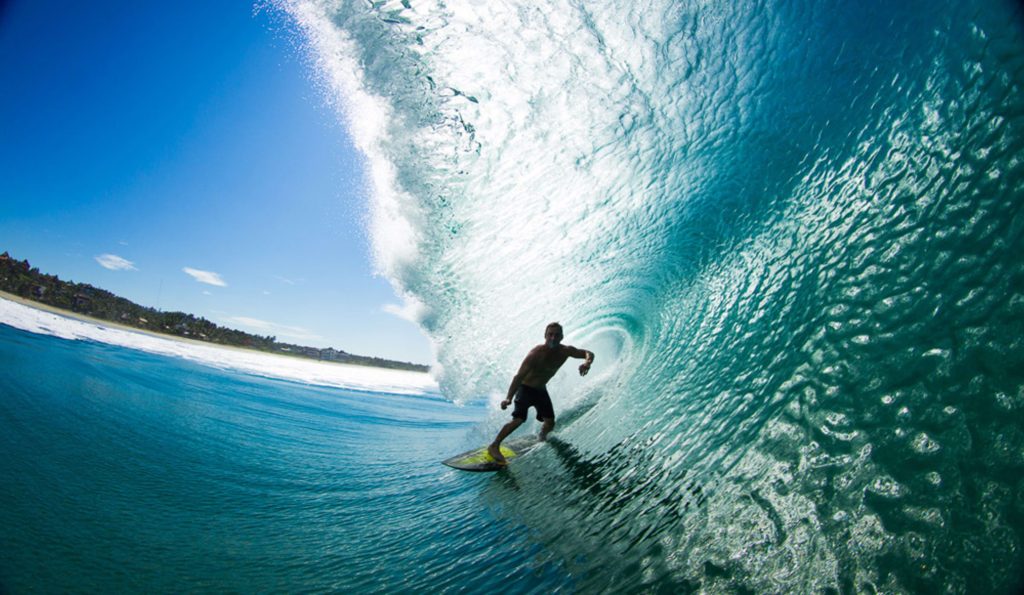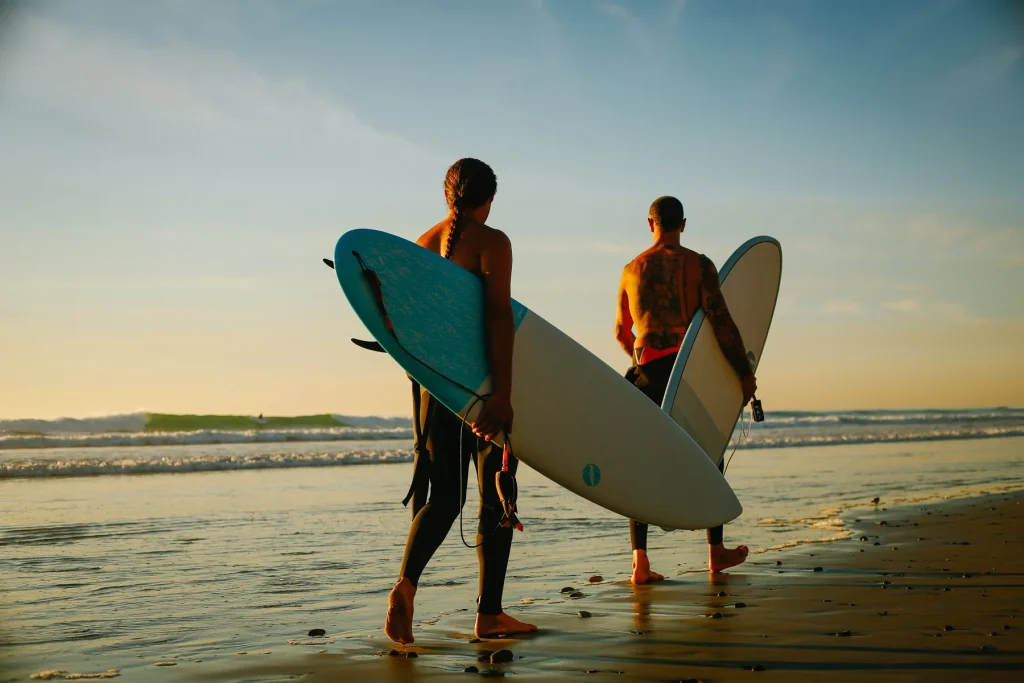Finding the perfect surfboard can feel overwhelming, especially if you’re new to the sport. With so many options to choose from—ranging from board types to tail designs and everything in between—it’s easy to feel lost. To simplify the process, this guide breaks down the essentials you need to know before making your purchase, from understanding how your body type and fitness level impact your choice to learning about different surfboard features and designs.

Factors to Consider When Picking a Surfboard
Before diving into specific surfboard styles and features, it’s important to think about a few key factors that will influence your choice.
Skill Level:
Beginners should start with foam or soft-top boards, which offer plenty of volume and enhanced stability due to their wide, rounded noses and wider tails. These boards make it easier to paddle and stand up when catching waves, providing a smoother learning experience.
Fitness Level:
Your fitness level also plays a role in determining which board to choose. If your stamina and paddling strength are still developing, a slightly thicker and wider board will offer more buoyancy and make paddling feel less strenuous, allowing for a more enjoyable session.
Height and Weight:
The size of your surfboard should correspond to your body size. Taller and heavier surfers generally need larger boards for better flotation and control. While there are online calculators to help determine the right board size based on height and weight, remember they provide general guidance and don’t account for all factors.
Type of Wave:
Consider the type of waves you’ll be surfing. For moderate, everyday conditions, an all-around shortboard will do the job. However, waves can vary greatly from one location to another, which is why experienced surfers often have a quiver—several boards tailored to different surf conditions.
Types of Surfboards
Surfboards come in various shapes and designs, each serving a specific purpose. Here’s a breakdown of the most common types:
Shortboards:
The go-to choice for most surfers, shortboards are built for high-performance surfing and executing tricks. However, their low volume makes them difficult for beginners to handle, as they offer less buoyancy and are harder to paddle.
Longboards:
Longboards are typically over nine feet long and feature a rounded nose, providing excellent stability and paddling power. They’re perfect for beginners thanks to their ability to catch waves easily and maintain speed, making them a forgiving option for learning.
Fish Boards:
Essentially shorter, wider versions of shortboards, fish boards excel in small to medium waves by generating impressive speed and providing better floatation. They’re ideal for surfers transitioning from longboards to shorter boards.
Guns:
These long, narrow boards are designed for big-wave surfing. They offer excellent control and stability when tackling fast, powerful waves but are not ideal for everyday surfing due to their size and stiffness.
Stand-Up Paddleboards (SUPs):
Larger and more buoyant than traditional longboards, SUPs are propelled by paddles, making them versatile for use on lakes, rivers, and the ocean. While not a traditional surfboard, SUPs have grown increasingly popular for their stability and relaxed style of riding.

Understanding Surfboard Tail Designs
The tail design of your surfboard plays a crucial role in its performance, affecting speed, maneuverability, and control. Here’s what you need to know:
Square Tail:
With pointed corners, square tails enhance sharp turns and provide a quicker release from the wave’s surface, offering excellent control.
Round Tail:
Following the board’s natural curve, round tails enhance stability and create smooth, flowing turns. They’re most commonly seen on shortboards designed for maneuverability.
Pintail:
A narrow design with a pointed end, pintails offer maximum control in powerful waves, making them perfect for big-wave surfing. However, their limited surface area reduces turning capability.
Round Pin Tail:
A variation of the pintail, round pins offer a bit more surface area and curve, providing a balance between stability and smoother turning capabilities. They’re well-suited for medium-sized waves.
Squash Tail:
Squash tails are popular among shortboards due to their ability to generate speed and provide responsiveness during abrupt turns. They strike a balance between maneuverability and control.
Swallow Tail:
Often seen on fish boards, swallow tails enhance speed and lift while offering more control during turns. The design’s unique cutout shape allows for smooth transitions between maneuvers.
Choosing Surfboard Fins
Fins are a crucial component of your surfboard, impacting stability, speed, and turning ability. Here’s a quick look at different configurations:
Single Fin:
Traditional and commonly found on longboards, single fins offer excellent stability and control for straight-line surfing but are not as agile when it comes to quick turns.
Twin Fin:
Best suited for shortboards, twin fins provide a looser feel, enhancing speed and maneuverability—perfect for playful and stylish surfing.
Tri-Fin (Thruster):
The most popular setup, tri-fins combine stability, control, and responsiveness, making them ideal for beginners and experienced surfers alike.
Quad Fin:
This setup enhances speed by channeling water through the back of the board, making it a great choice for smaller waves while offering a solid grip for larger, steeper waves.
5-Fin:
Designed for versatility, five-fin boards allow you to switch between configurations like single, twin, or quad fins, depending on wave conditions and personal preference.
2+1 Fin:
Commonly used for stand-up paddleboards and some longboards, this setup includes a larger center fin flanked by two smaller ones, offering both stability and turning performance.
Understanding Surfboard Rails
Rails refer to the edges of the surfboard running from nose to tail. Their shape plays a significant role in how water flows over the board, impacting speed and maneuverability.
Hard Rails:
With sharp, angular edges, hard rails provide better cutting power through waves, enhancing speed and precision but making it harder to perform tight, pivotal turns.
Soft Rails:
Featuring rounded edges, soft rails create a smoother feel and offer excellent stability. They’re common on longboards and best suited for relaxed, cruising-style surfing.
Making the Right Choice
Choosing the right surfboard is about finding the balance between your skill level, fitness, body type, and the wave conditions you’ll be surfing. While it can be tempting to go for high-performance shortboards, beginners should always start with boards that offer more stability and buoyancy. With the right board, you’ll be ready to hit the waves and enjoy the thrill of surfing.


Leave a Reply